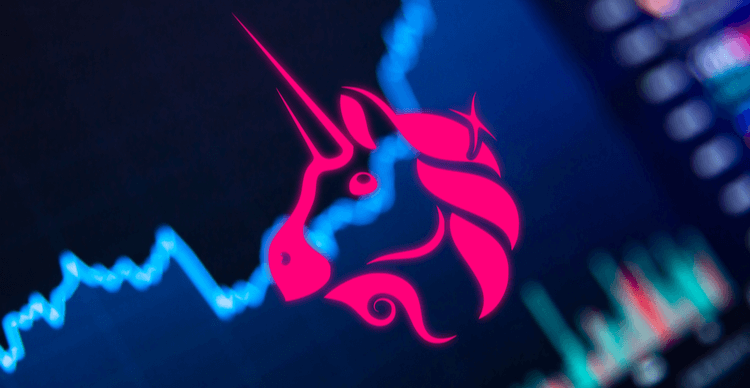LIVE UPDATES: Stocks mixed, oil, gas, crypto higher
5 PostsSort BySort by NewestSort by OldestBack to Top
incoming update…Bitcoin, Ethereum and Dogecoin prices all higher early MondayCryptocurrency prices edged higher early Monday morning. (Getty Images)
Cryptocurrency prices for Bitcoin, Ethereum and Dogecoin were all higher early Monday.
At approximately 4:30 a.m. ET, Bitcoin was trading at approximately $19,210 (+0.60%), or higher by more than $100.
For the week, Bitcoin was trading higher by nearly 1.7%. For the month, the cryptocurrency was down more than 4.3%.
Ethereum was trading at approximately $1,290 (+0.83%), or higher by more than $10.6.
For the week, Ethereum was trading lower by nearly 1%. For the month, it was trading lower by approximately 19%.
Dogecoin was trading at $0.059762 (+0.72%), or higher by approximately $0.000425.
For the week, Dogecoin was lower by nearly 3%. For the month, the crypto was lower by approximately 3.5%.Posted by FOX Business Team ShareGas prices take slight upturn, diesel fallsGasoline prices were higher Monday morning while diesel prices edged lower. (gasprices.aaa.com)
The recent run of gasoline price increases nationwide resumed on Monday, one day after a slight decrease.
Mondays price for a gallon of gasoline nationwide was $3.799. On Sunday, the price slipped to $3.796, down from Saturday’s $3.80 a gallon, according to AAA.
One week ago, the price of a gallon of gasoline nationwide was $3.725. One month ago, the price was $3.796. One year ago, the price of a gallon of gasoline stood at $3.196.
Gasoline hit an all-time record high on June 14 of $5.016, approximately 16 weeks ago.
Meanwhile, diesel fell Monday, selling for $4.87 per gallon. On Sunday, the price is at $4.873 a gallon.
One week ago, the price of a gallon of diesel nationwide was $4.899. One month ago, the price was $5.074. One year ago, the price of a gallon of diesel stood at $3.349.Posted by FOX Business Team ShareConcealed carry insurance business booming as more Americans pack heatConcealed carry insurance providers are seeing a strong uptick in membership as crime soars around the U.S. (Associated Press)
Major concealed carry insurance providers in the U.S. say they have seen unprecedented growth in the past few years, as rising crime rates continue to drive more Americans to take their personal safety into their own hands by buying a firearm for self-defense.
Delta Defense, which runs the U.S. Concealed Carry Association (USCCA) and provides self-defense liability insurance coverage as part of membership in the education and training organization, has seen its membership numbers more than double from 300,000 in 2020 to nearly 700,000 today. A decade ago, USCCA’s membership was at 50,000.
Tim Schmidt, CEO of Delta Defense and President and Co-founder of the USCCA, attributes the surge to the “millions of brand new gun owners there are in the wake of primarily all the riots that happened in early 2020.”
He told FOX Business, “A lot of people came to the realization that Holy cow I need to be able to defend myself, so I’m going to buy a gun.'”
And those new gun owners are seeking out education, training and further protection.
Competitor U.S. LawShield, which launched in 2009 and also provides education, training and concealed carry insurance, saw an enormous surge in membership starting in 2020, too.
“We had this combination in the last two or three years of COVID, civil unrest, gigantic increases in crime across the country and we saw a very, very unprecedented growth in our company.”
CEO Kirk Evans told FOX Business, saying that his organization is also currently sitting at around 700,000 members. Evans said another reason the industry has seen so much growth is because of increasing diversity among gun owners.
“You could not go a week in the last year or two without seeing an article about women make up the largest demographic of new permit holders or African Americans have shown the highest increase or minorities as the biggest increase in blank or people in San Francisco running out to buy a firearm,” he said. “This is not a white conservative group anymore.”Posted by Breck Dumas ShareUS stocks whipsawing as fourth quarter begins on Wall StreetUS stocks were whipsawing early Monday morning. (Associated Press)
Symbol PriceChange%ChangeI:DJI$28,725.51-,500.10-1.71SP500$3,585.62-54.85-1.51I:COMP$10,575.62-,161.89-1.51
U.S. stocks were whipsawing as investors await the beginning of the fourth quarter when the markets open on Monday morning.
Wall Street closed out a miserable September on Friday with the S&P 500’s worst monthly skid since the coronavirus pandemic crashed global markets. Its now at its lowest level since November 2020 and is down by more than a quarter since the start of the year.
The Fed has been at the forefront of the global campaign to slow economic growth and hurt job markets just enough to undercut inflation but not so much that it causes a recession.
On Friday, the Feds preferred measure of inflation showed it was worse last month than economists expected. That should keep the Fed on track to keep hiking rates and hold them at high levels a while, raising the risk of it going too far and causing a downturn.
Vice Chair Lael Brainard was the latest Fed official on Friday to insist it won’t pull back on rates prematurely.
The S&P 500 fell 1.5% to close at 3,585.62 Friday. The Dow Jones Industrial Average dropped 1.7% to 28,725.51. The Nasdaq composite slid 1.5% to 10,575.62. The tech-heavy index sank 10.5% in September and is down 32.4% so far this year. Smaller company stocks also had a rough September. The Russell 2000 ended the month down 9.7%.
On Friday, it lost 0.6% to 1,664.72. Other worries hang over global markets, including Russia’s invasion of Ukraine. A U.K. government plan to cut taxes sent bond markets spinning recently on fears it could make inflation even worse.
Bond markets calmed a bit only after the Bank of England pledged last week to buy however many U.K. government bonds are needed to bring yields back down. The stunning and swift rise of the U.S. dollar against other currencies, meanwhile, raises the risk of creating so much stress that something cracks somewhere in global markets.
Meanwhile, Asian shares were mostly lower on Monday. Tokyo rose while other regional markets declined. Shanghai was closed for Chinas weeklong National Day holidays.
Japan’s Nikkei 225 index gained 1.1% to 26,215.79 after a Bank of Japan quarterly survey showed sentiment among manufacturers has darkened, reflecting rising costs, the weakening yen and lingering pandemic-related restrictions.
The headline measure for the tankan, measuring sentiment among large manufacturers, was plus 8, down from plus 9 the previous quarter. The tankan measures corporate sentiment by subtracting the number of companies saying business conditions are negative from those responding they are positive.
Todays Tankan survey suggests that while the services sector is benefitting from the subsiding virus wave, the outlook for the manufacturing sector continues to worsen,” said a report from Capital Economics. It noted it was the third consecutive decline in sentiment for the world’s third largest economy.
The BOJ has kept interest rates below zero in a longstanding effort to encourage inflation and keep deflation at bay as the country ages and its population shrinks. That has kept the value of the yen weak relative to the U.S. dollar, which has been strengthening as the Federal Reserve raises rates to combat decades-high inflation.
The dollar was trading at 145.04 yen early Monday, up from 144.68 yen late Friday. The euro was at 97.98 cents, up from 97.96 cents.
Elsewhere in Asia, Hong Kong’s Hang Seng index fell 0.9% to 17,073.81. Australia’s S&P/ASX 200 slipped 0.3% to 6,456.90. Taiwan’s Taiex lost 0.9% and Bangkok’s SET declined 1.3%. Posted by Associated Press SareOil rebounds 3% as OPEC+ weighs biggest output cut since 2020Oil prices jumped more than 3% in early Asian trade on Monday as OPEC+ considers cutting production. (Getty Images)
SymbolPriceChange%ChangeUSO$65.28-1.49-2.23CVX$143.67-1.10-0.76XOM$87.31-1.37-1.54
Oil prices jumped more than 3% in early Asian trade on Monday, as OPEC+ considers cutting output by more than 1 million barrels a day, for its biggest reduction since the pandemic, in a bid to support the market.
Brent crude futures rebounded $2.36, or 2.8%, to $87.50 a barrel by 0622 GMT, after settling down 0.6% on Friday.
U.S. West Texas Intermediate crude was up 2.9%, or $2.27, at $81.76 a barrel, after the previous session’s loss of 2.1%.
Oil prices have tumbled for four straight months since June, as COVID-19 lockdowns in top energy consumer China hurt demand, while rising interest rates and a surging U.S. dollar weighed on global financial markets.
To support prices, the Organization of the Petroleum Exporting Countries and its allies, a group known as OPEC+, is considering an output cut of more than 1 million bpd ahead of Wednesday’s meeting, OPEC+ sources told Reuters.
If agreed, it will be the group’s second consecutive monthly cut after reducing output by 100,000 bpd last month. But analysts expect the hit to supply from the cut will be markedly lower than the headline number, as many OPEC+ members are producing far less than their quotas.
With just a handful of producers hitting output targets, it is likely that only they would have to cut, ING analysts said in a note.
OPEC+ missed its production targets by nearly 3 million bpd in July, two sources from the producer group said, as sanctions on some members and low investment by others stymied its ability to raise output.
“Anything less than 500,000 barrels a day would be shrugged off by the market. Therefore, we see a significant chance of a cut as large as 1 million barrels a day,” ANZ analysts said in a note.
While prompt Brent prices could strengthen further in the immediate short term, concerns over a global recession are likely to limit the upside, consultancy FGE said. “If OPEC+ does decide to cut output in the near term, the resultant increase in OPEC+ spare capacity will likely put more downward pressure on long-dated prices,” it said in a note on Friday. Posted by Reuters Share
Live Coverage begins here





